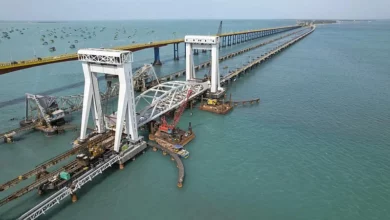
From parturition to present, authorities in Delhi have been in a tizzy after a dramatic increase in air pollution. In a city that had schools closed, construction activities halted, and non-essential trucks barred, the blanket of toxic smog enveloped northern India on Monday, exacerbated by dense fog overnight as air quality in some areas of the National Capital Territory reached an alarming index of 1,081, according to Swiss organization IQAir.
It reported a 24-hour air quality index reading of 484, classified as “severe plus” -the worst levels recorded this season. Experts warn that variations in the way different countries calculate AQI can result in fluctuations in reported pollution levels even if the concentration of the pollutant is the same.
Levels of PM2.5-a kind of particulate matter that has severe health implications-were recorded at 39 times above limits recommended by the World Health Organization. An annual winter phenomenon, characterized as a toxic mix of smoke and fog that has been fashioned by cold air arresting dust, emissions and smoke arising from illegal farm fires in neighbouring states.
In a bid to tackle deteriorating air quality, all national capital schools have been ordered to go online. Construction activities and vehicle movement have been restrained to check on air pollution. Authorities have decided to reduce traffic congestion by keeping children at home and hoping to improve the quality of air. Chief Minister Atishi declared that only classes 10 and 12 students will be allowed in schools, physical classes for all others to be discontinued.
Many face an unpalatable truth: cheap air filters are out of their league, and not all of them can close their homes to the noxious air, which is said to cause thousands of premature deaths every year. In a metropolis with over 30 million people, Delhi remains one of the world’s most polluted regions each winter.
Subodh Kumar, rickshaw puller, local: “My eyes have been burning the past few days. Pollution or no pollution, I have to be out on the road. We cannot afford to stay indoors…our means of livelihood, food, and life-everything is in the open.”
Experts say farm fires, including those set after rice is harvested, account for about 40 percent of Delhi’s pollution. Satellite data last week reported 1,334 such incidents across six Indian states-a record four-day high.
Even hazardous conditions did not stop most residents from going about their daily lives, though visibility dipped to a shocking 100 meters. Even hazardous conditions could not ground flights and trains, though some were reportedly delayed.
High pollution levels are expected as there has been a forecast of “dense to very dense fog” over northern states such as Uttar Pradesh, Haryana, and Rajasthan. Also, with a temperature this time of the year along with a stagnant wind normally contributes to rising pollution from mid-October until January.
The Indian Supreme Court made the situation clear last month by declaring clean air to be an absolute human right and directing the central and state authorities to take decisive action.



